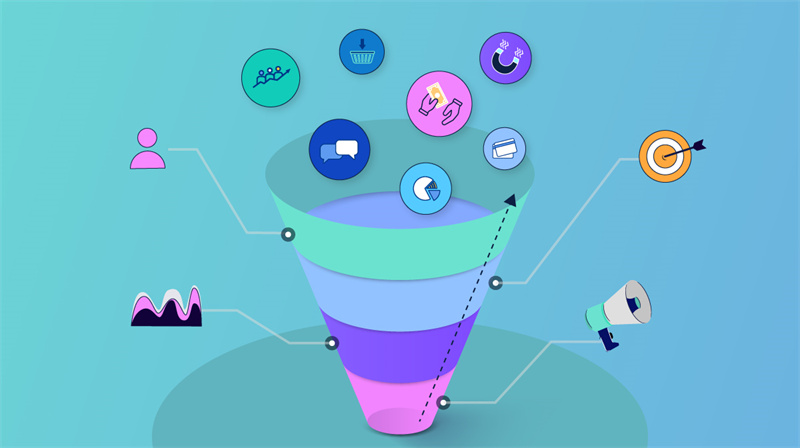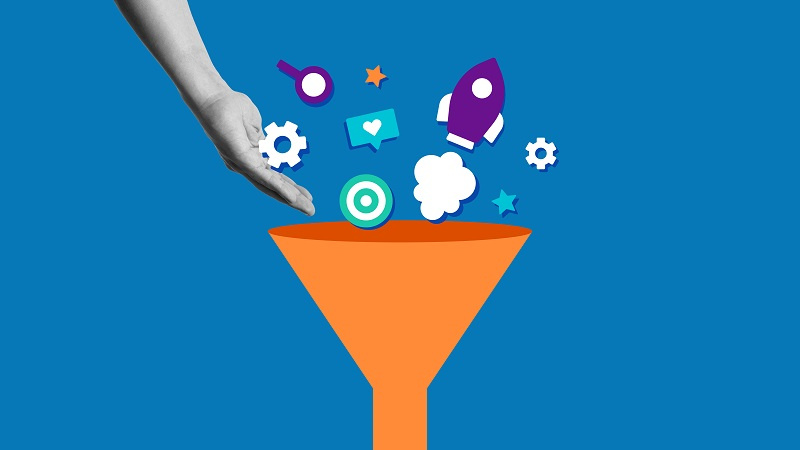Marketing is all about crafting an experience that engages and inspires your target audience. The ultimate goal is to create a loyal customer base that believes in your brand and speaks positively of your products or services.
However, creating an effective marketing strategy is easier said than done, especially when you’re trying to move potential customers from the awareness stage to the conversion stage.
By developing a winning funnel marketing strategy, you can take your target audience on a journey from mere awareness to eventual conversion.
In this post, we’ll take a closer look at funnel marketing and how to craft a winning strategy that your audience absolutely cannot resist.
What is Funnel Marketing: Why and How Does it Work?

If you’re a marketer, you’ve probably heard the term ‘funnel marketing’ thrown around a lot lately. But what exactly is it? Funnel marketing, also known as the sales funnel, is a framework used by companies to guide their potential customers toward making a purchase.
Regardless of what kind of business you have, the primary goal of funnel marketing is to guide a customer through the sales process, from being aware of your business to purchasing your product or service. The funnel is divided into stages, each with a particular purpose.
The first stage is awareness, where potential customers become aware of your business or product. The second is interest, where the customer begins to show interest and learn more about your product. The third stage is about the decision, where the customer decides to purchase your product. Finally, the fourth is the action stage, where they make the purchase.
Funnel marketing works because it’s designed to address customer needs at each stage of the process. These stages differ throughout the journey, but by understanding what customers want and when they want, businesses can be more targeted (and effective) in their approach.
One of the benefits of funnel marketing is that it saves time and resources for businesses. By creating targeted content, businesses can focus their energy on those who are most likely to purchase their product. It helps businesses to track the progress of potential customers throughout the sales process, identify gaps, and improve their marketing efforts.
Another significant advantage of funnel marketing is that it allows businesses to build a relationship with their potential customers. By providing valuable content throughout the process, businesses create a positive experience for their customers.
Identifying Your Target Audience and Crafting a Message that Resonates with Them
Step one in creating a successful funnel marketing strategy? You need to identify your target audience. You need to know who they are, what they like, their pain points, and how your product/service can solve their problems.
Once you have identified your audience, it’s time to build a messaging strategy that resonates with them. This involves creating messaging that speaks to their needs, values, and preferences.
You should focus on providing quality content that’s both valuable and informative, and your branding should be crystal-clear across all channels.
Setting Up the Awareness Stage of the Funnel – Tactics to Reach Your Audience
Once you have your messaging and content sorted, it’s time to attract your target audience and build awareness. There are multiple tactics to reach your audience, including social media advertising, video advertising, search engine marketing, and more.
And don’t think you have to pick just one! By using a mix of different advertising platforms, you can maximize your reach and ensure that your message is being seen by your target audience.
Throughout all this, it’s important to track and measure key performance metrics to better understand the success of your marketing strategy. Using data such as conversion rates, click-through rates, and engagement, you can refine and optimize your strategy for better results.
Developing Engagement Strategies that Create Brand Loyalty
Next, you need to focus on engagement. This involves creating strategies that keep prospects engaged with your brand and ultimately create brand loyalty.
Leveraging strong calls-to-action and personalization tactics, sending out newsletters and email campaigns, and creating social media content are all useful tactics to nurture leads through the conversion process.
Nurturing Leads Through Conversion: How to Get Prospects to Take Action

The final stage of the funnel is converting leads into customers. This can be achieved through a strong call-to-action that encourages prospects to take the next step, whether making a purchase or signing up for a service.
To increase conversions, it’s a good idea to create a sense of urgency, and then incentivize prospects to complete their purchase.
Measuring and Optimizing Your Funnel Performance for Long-term Success
Once you’ve successfully converted your prospects into customers, you’ve made a significant accomplishment — but your work is still ongoing. You need to continue measuring and optimizing your funnel performance for long-term success.
Optimizing for retention and loyalty by implementing strategies such as rewards programs and post-purchase emails is smart. It’s a great way to keep your customers engaged and retain their business for the long haul.
Key Takeaways
By following the stages of the funnel and creating the right content and lead magnets at each step, you can create an experience that is engaging, personalized, and ultimately converts.
Remember, the key is to keep your audience interested and engaged at every step of the way – whatever that might take.With the right strategy and approach, you can create a funnel that generates lifelong customers and loyal brand advocates.
